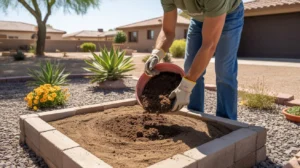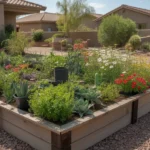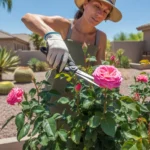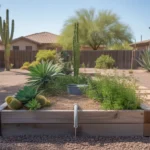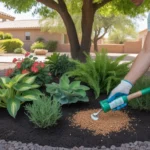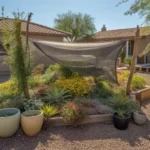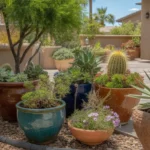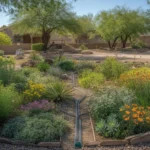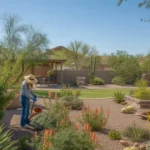Spring gardening in Chandler comes with its own set of unique challenges. From unforgiving desert soil to persistent weeds and unpredictable weather, it takes some know-how and elbow grease to coax a lush garden from the Valley’s dry earth. But with the right approach and a few expert tips, you can overcome these hurdles and enjoy a thriving, colorful yard all season long. Here’s how Chandler gardeners can tackle the most common spring obstacles.
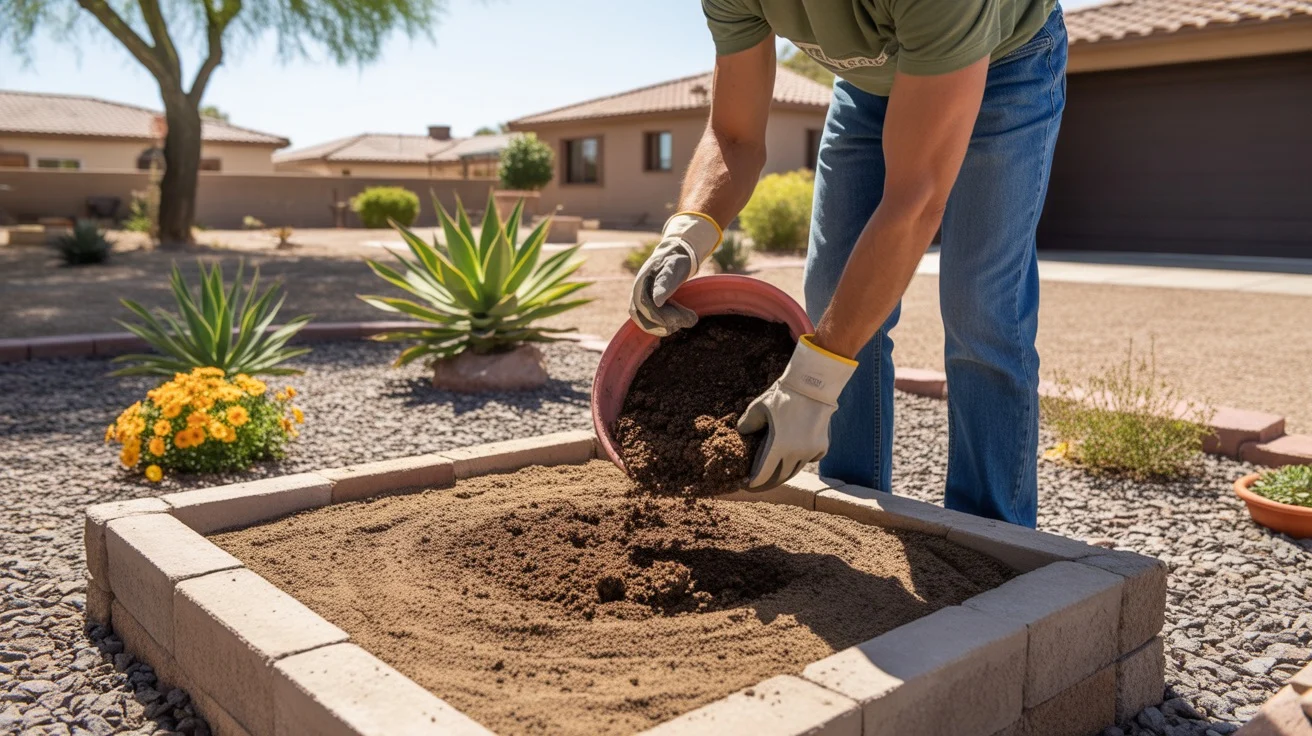
Amending Chandler’s Desert Soil
One of the biggest challenges Chandler gardeners face is the city’s native soil. Our Sonoran Desert dirt tends to be sandy, alkaline, and low in organic matter—not exactly the loamy, nutrient-rich soil most plants crave. The key to growing a successful garden is amending and enriching that soil to create a more hospitable environment.
Start by mixing in generous amounts of aged compost, which will improve soil structure, drainage, and fertility. Aim for about 30% compost to 70% native soil. For heavy clay soil, add some coarse sand to improve drainage. Peat moss is another helpful amendment that retains moisture and slowly releases nutrients. Aim for a pH between 6.0 and 7.0 for most plants.
If you’re starting a new garden bed, save yourself some work by building raised beds and filling them with a high-quality, pre-mixed garden soil. This gives you a clean slate with the ideal texture and composition for your plants. Just be sure to choose a mix that’s appropriate for the desert, without too much peat moss or moisture-retentive materials that can oversaturate roots.
Winning the War on Weeds
Spring is peak season for weeds in Chandler yards, as winter rains and warming temperatures coax countless seeds out of dormancy. Allowed to run rampant, weeds will quickly take over garden beds, steal nutrients from your plants, and leave your yard looking shabby. The solution is a combination of prevention and timely intervention.
A thick layer of organic mulch, like shredded bark or straw, is your first line of defense against weeds. Mulch blocks sunlight and smothers weed sprouts before they can take hold. Apply a 3-4 inch layer around plants and in garden pathways. As a bonus, it also conserves soil moisture and moderates temperatures.
For weeds that do sprout, the key is to act fast before they can flower and spread their seeds. Hand-pulling is the most eco-friendly approach, and it’s easiest when soil is moist after a rain or deep watering. Dislodge the whole root system so the weed can’t resprout. Weeding frequently, even for just a few minutes a day, prevents a few intruders from turning into an overwhelming invasion.
Selecting Desert-Adapted Plants
Plant selection can make or break a Chandler garden. Far too many eager spring gardeners stock up on lush, thirsty annuals or heat-sensitive vegetables, only to watch them wither and crisp under the intense desert sun. The secret is choosing varieties that are well-adapted to the Sonoran Desert climate, with its blazing heat, low humidity, and scant rainfall.
For reliable color from spring through fall, you can’t beat native and desert-adapted perennials. Some top performers for Chandler include desert marigold, angelita daisy, blackfoot daisy, penstemon, and chuparosa. Among succulents, try desert spoon, parry’s agave, or octopus agave for striking form and low maintenance.
If you love the lush look of flowering annuals, opt for heat-loving choices like zinnia, vinca, gomphrena, portulaca, and lisianthus. These showy bloomers laugh off triple-digit temperatures and look bright all summer with minimal coddling. Avoid cool-season annuals like petunias and snapdragons, which melt out fast as temperatures climb.
Timing Planting Just Right
In the desert, timing is everything when it comes to planting. Put tender seedlings in the ground too early, and a late cold snap could stunt or kill them. Plant too late, and your vegetables may wither in the heat before they can produce a harvest. The key is understanding Chandler’s unique growing seasons and timing crops accordingly.
For most warm-season vegetables, like tomatoes, peppers, squash and melons, the ideal planting window is mid-February through March. Start seeds indoors 6-8 weeks before your anticipated planting date to get a jump on the season. Wait until early October to plant cool-season crops like broccoli, lettuce, peas, and beets.
Perennials, trees, and shrubs have a longer planting window, but it’s still smart to get them in the ground before the worst of summer’s heat arrives. Aim to have everything planted by the end of April so roots have time to get established before intense heat sets in. The exception is frost-tender species like bougainvillea and hibiscus—wait until mid-March or later to plant those.
Irrigating Efficiently in the Desert
With Chandler’s low rainfall and relentless summer sun, proper irrigation is essential for a healthy, productive garden. The key is delivering the right amount of moisture at the right time, without wasting this precious resource. Drip irrigation is by far the most efficient option, as it sends water directly to plant roots instead of spraying it into the air.
Design your irrigation zones based on plant types and water needs. Thirsty vegetables and annuals may need daily watering, while established desert perennials can get by on a weekly or twice-monthly drink. Avoid the temptation to overwater—desert plants are prone to root rot if kept too soggy. Let soil dry out a bit between waterings to promote deeper, more drought-resistant roots.
Proper scheduling is also key. Run drip systems in the early morning, between 4 and 8 am, when evaporation is lowest. Watering deeply and less frequently is better than a daily sprinkle. Aim to moisten soil to a depth of at least 6 inches for perennials and 1 foot for trees and shrubs. Use a soil moisture sensor to fine-tune your irrigation schedule over time.
Protecting Plants from Pests
Dry as it is, the desert still has its share of hungry garden pests. In Chandler, aphids, whiteflies, and thrips are among the most common culprits, sucking the juices from vegetable crops and leaving foliage stippled and yellowed. Catching an infestation early is key to protecting your plants and preventing these sap-suckers from spreading.
Start with good garden hygiene, removing spent flowers and fallen leaves that can harbor pests. Inspect plants regularly for signs of damage, and prune out small infestations before they spread. A strong spray from the hose can dislodge aphids and whiteflies. Insecticidal soaps are a safe, effective treatment for heavy outbreaks.
Encouraging beneficial insects is another smart strategy. Ladybugs, lacewings, and praying mantises are voracious predators that will help keep pest populations in check. Avoid broad-spectrum insecticides that can harm these helpful garden allies. Instead, use selective products like Neem oil or Bt for targeted control of caterpillars and beetles.
With a bit of desert know-how and proactive care, you can keep your Chandler garden thriving all spring and beyond. By working with nature and choosing plants wisely, you’ll be rewarded with a yard that’s as colorful and resilient as the Sonoran Desert itself.

